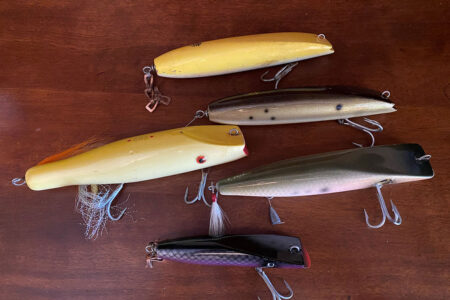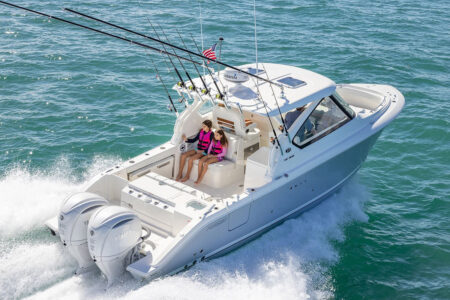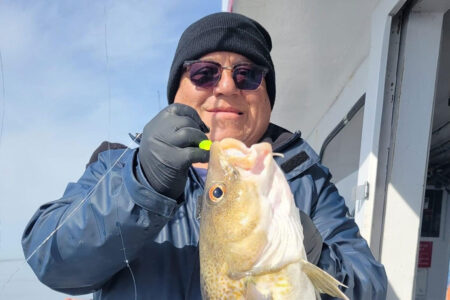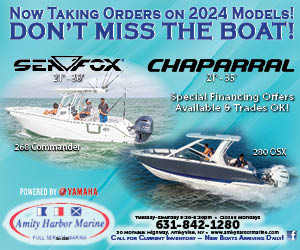The basic fishing kayak platform is prime for tricking-out to meet your angling needs.
There are many fine choices in kayaks available for fishermen today, and they can be purchased up front with layouts specific to your needs. Personally, I own two kayaks that are rigged for different styles of fishing: a Cobra and a Native. The Cobra is rigged for rough water and uses an electric-powered trolling motor for propulsion. The Native utilizes an integrated pedal-drive system and is sized and configured more for inland waterways. Both are excellent for their intended purpose.
Know the type and style of fishing you will be doing and the waters you will be frequenting. For example, when fishing rough water rips, stability is vital. You will need something seaworthy in even the most adverse conditions. Hauling a large fish over the side in heavy seas or a rip requires a wide and stable platform. Another factor is portability. Launching in difficult-to-reach areas without a sandy beach or boat ramp can damage the bottom of a kayak and you will need stronger resin materials and a keel that can withstand the punishment of being launched in these situations.
The Cobra is 13 feet long, has a wide beam and reverse chines that make her incredibly stable. It has a built-in bottom keel that absorbs punishment, but as with anything there are tradeoffs. Although very stable in rough seas, she is heavy and slow to maneuver. I’ve been towed at better than 5 mph in fast rips when a big fish takes advantage of the current. If you’re heading into rocks or rip-induced swells maneuverability becomes important especially while fighting a fish with both hands tied up on the fishing rod. To resolve this issue, I added a propulsion system by way of an electric motor with 55-pound thrust by Newport Vessels. The combination of a wide, stable kayak and electric motor really made a difference. Along with adding the necessary maneuverability, I can now reach more places with ease. Having it motorized, I also added a small waterproof battery charger to the kayak for convenience. Whether it’s stored in the garage or outside, it can then be easily plugged into any available outlet.
I picked my Native kayak with propeller drive specifically for use in coastal inland waters, rivers and tidal creeks. This type of fishing requires immediate responsiveness in and around bridges, piers and boat docks. Here, swift handling and pinpoint positioning can be the key to success. Especially handy is the “instant reverse” achieved just by pedaling backwards. These kayaks are lightweight, stable, quick to launch and easily maneuvered. You can even stand up on these platforms enabling good stability for the fly fisherman. If you opt for a pedal-drive system, an aftermarket rudder like those offered by BooneDox can really help with performance and maneuverability. These can add a lot to the handling characteristics of your kayak. Remember, improved control especially in fast-moving water is the key!
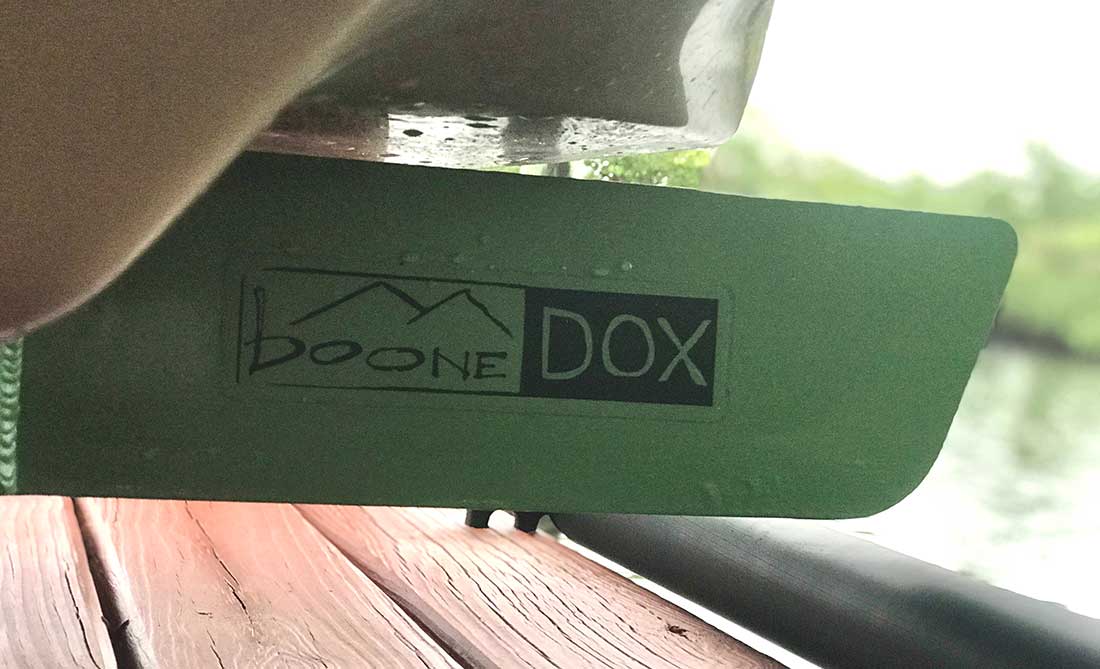
When you set out for a session, most of what you need will be guided by the type of fishing you do, but focus first on practical things that will help maximize your outing. With the limited real estate of a kayak you want to be sure to bring only what’s necessary to improve the odds of a successful day. Avoid cluttering your fishing platform.
The most important and expensive items we bring are our fishing rods and reels. When purchasing and rigging rodholders, make sure they can be angled and rods can be secured properly. Having multiple rods straight up in the rodholders is a recipe for trouble as you run the risk of tangling when casting or switching sides while trolling. The rodholders that attach to milk crates for storage are typically not adjustable so make sure, if used, to position the storage crate in an area that will decrease the possibility of them getting in the way.
The rodholders used when fishing should be infinitely adjustable. I like to have them angled and crossed directly in front of the sitting position. This is done strategically so they are directly in my line of sight, especially when trolling, and can be reached quickly when a fish strikes. It also puts the line at easy reach while trolling either lures or live bait. I can reach forward and impart action to the line or just pinch it between my fingers to tell what’s going on at the terminal end.
The next set of essential gear I use on my fishing platform is a downrigger, chartplotter and anchoring system. Use of a downrigger in conjunction with a fish finder will allow you to target fish found anywhere in the water column. This allows for greater flexibility as things unfold, especially during tough days. Scotty makes a small profile downrigger that works perfectly for a kayak. Although a downrigger may not get used every trip, when needed it can save the day. Having a fish finder allows me to target specific depths when fish are noted on the screen. I recommend one with a GPS chartplotter so you can log important locations and keep tracking records of productive areas.
Here in the Northeast, many great blackfishing holes require a good anchoring system to stay in the sweet spot and have a productive day of fishing. Mine is rigged with an adjustable line and pulley system—anchor trolley—that allows positioning the anchor in the front or rear of the kayak simply by sliding the rope through the pulleys.
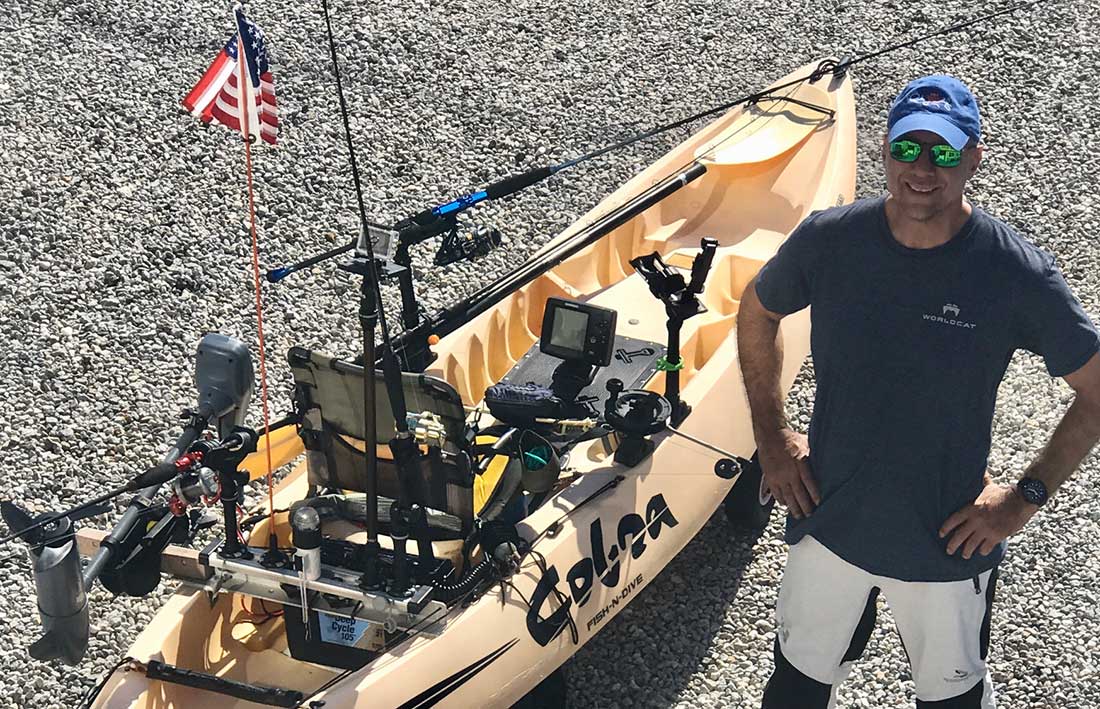
When adding ancillaries to your rig, take your time. I like to sit in the kayak and simulate fishing before bolting things in place. After getting dumped out of my kayak by a large striped bass I have a new-found respect for safety! With regards to this everything must be tied down in the event of rolling the kayak. I should have prepared better, but I didn’t, and this led to the loss of some gear. Have everything you’re not using strapped or tethered to the kayak in one way or another.
In the event of a rollover, make sure you can flip your kayak when fully loaded! This is not an easy thing to do, especially in rough water. You can buy a kayak rescue strap, and I suggest purchasing one specific to your rig and trying it out at least once before you need it. The installation of a bright LED stern light and use of a good headlamp when fishing after dark are essential to see and be seen. For additional safety a belt-pack-style PFD with safety leash can be a good compromise between safety and convenience.
Even though most modern fishing kayaks have some sort of accessory mounts and rodholders built-in, I find the addition of a flexible rail mount system like RailBlaza to be of benefit. Items like the ones suggested should all be readily available as part of this system so as your fishing needs grow and change, your rail mounts can adapt with you.
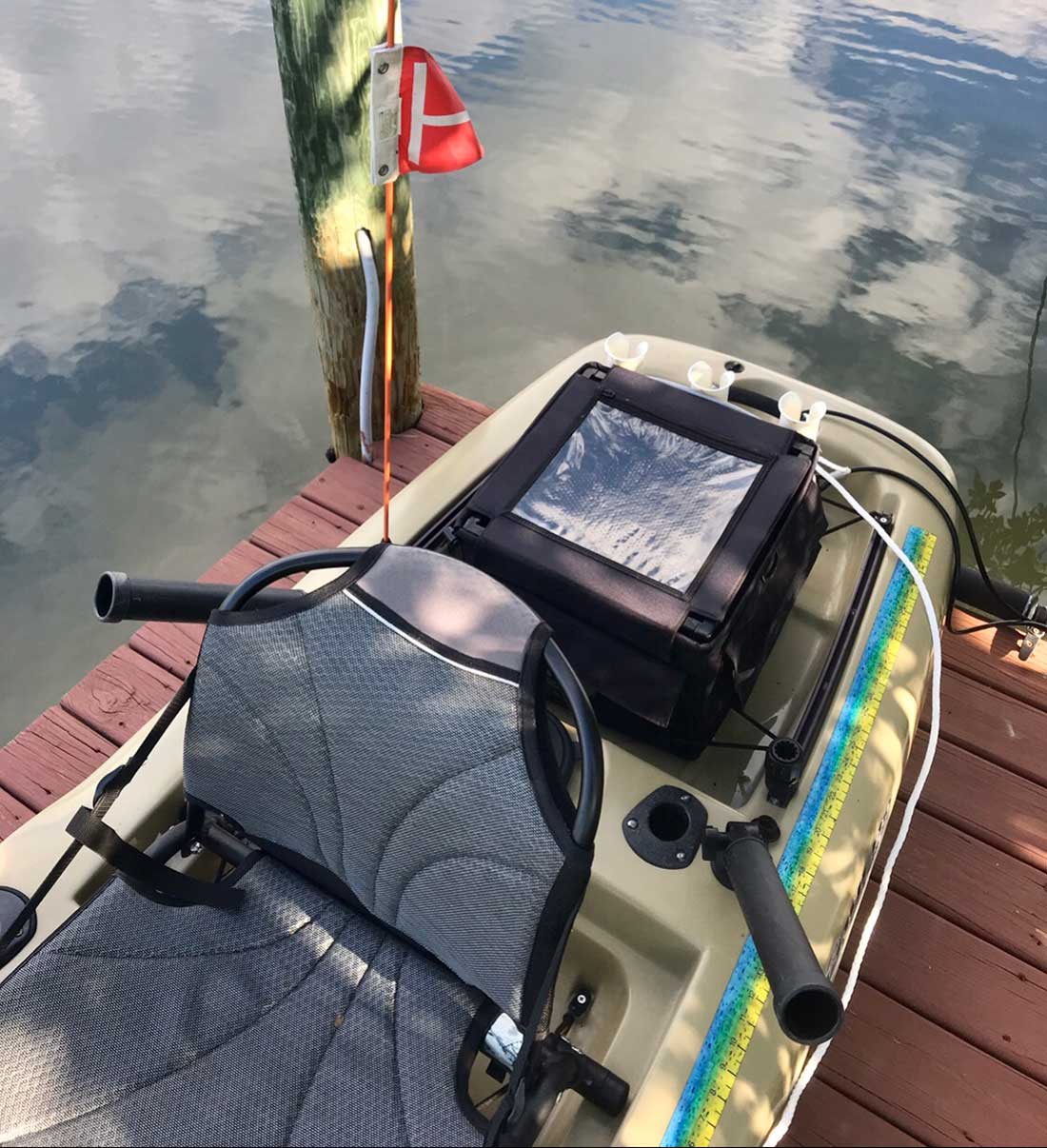
A small but extremely useful item is fishing lure wraps like the ones from KastKing to keep hooks safely out of harm’s way when on the rod but not in use. I can’t recall how many times I’ve been stuck on a stray hook before I started using lure wraps.
One item that is usually carried on every kayak trip but can be overlooked is the cell phone. Your phone is a critical piece of gear not only for calls and pictures but as a safety and fish prospecting tool. Be sure to pack it in a waterproof bag or case but keep it within easy access.
Some final items for consideration that are inexpensive and add a ton of value when needed include a folding knife, fishing pliers, medical kit, electric tape, small lanyards for personal items like cell phones, and waterproof storage boxes. In addition, if you fish solo, it can be difficult to get good video or pictures with an action camera. I carry a pair of waterproof video sunglasses that are one button activation and truly point of view.
Above everything remember you are dealing with limited space on a kayak and tradeoffs are necessary. Plan ahead, fine-tune as you go and above all else, have fun and catch fish!
